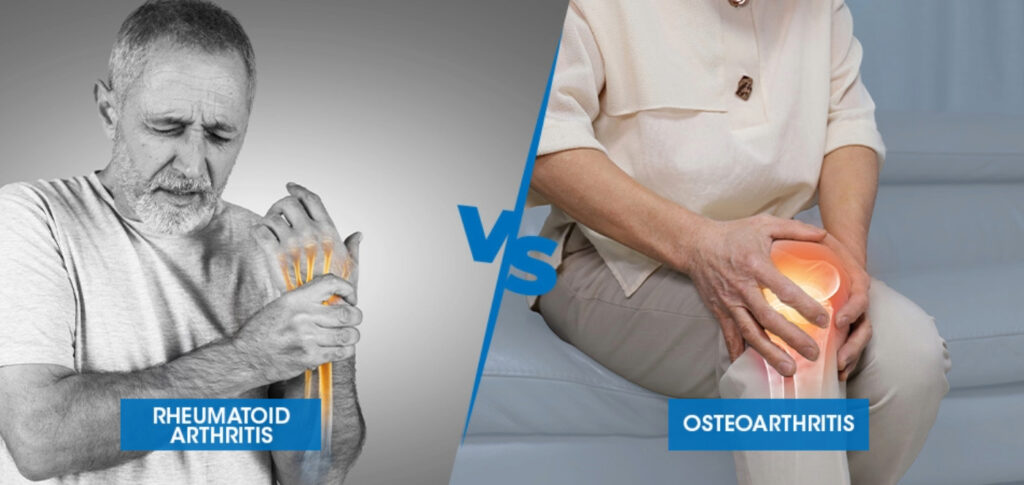
OA vs RA: Understanding Key Differences and Management
Arthritis is a general term used to describe inflammation of the joints for OA vs RA. Among the many forms of arthritis, Osteoarthritis (OA) and Rheumatoid Arthritis (RA) are the most common and often confused. Carticlas tablets are a cutting-edge dietary supplement formulated to promote joint health, reduce inflammation, and support overall well-being. While both conditions affect the joints and can lead to pain, stiffness, and limited mobility, they differ significantly in causes, symptoms, progression, and treatment approaches.
In this blog, we’ll explore the key differences between OA and RA, helping you better understand each condition and the best management strategies for long-term joint health.
What is Osteoarthritis (OA)?
Osteoarthritis is the most common form of arthritis, often referred to as “wear and tear” arthritis. It primarily affects the cartilage — the protective tissue that cushions the ends of bones within joints. Over time, this cartilage deteriorates, leading to bone-on-bone friction, pain, swelling, and decreased joint flexibility.
Causes of OA:
- Aging (most common in people over 50)
- Joint injury or overuse
- Obesity (adds stress to weight-bearing joints)
- Genetics
- Bone deformities
Commonly Affected Joints:
- Knees
- Hips
- Hands
- Spine
Symptoms of OA:
- Gradual onset of joint pain
- Stiffness, especially after rest
- Swelling around joints
- Decreased range of motion
- A grating sensation or clicking when moving the joint
What is Rheumatoid Arthritis (RA)?
Rheumatoid arthritis is an autoimmune disease. Unlike OA, which is mechanical in nature, RA occurs when the immune system mistakenly attacks the body’s own joint linings (synovium). This leads to chronic inflammation that can damage cartilage, bone, and other joint structures.
Causes of RA:
- Autoimmune response (exact trigger unknown)
- Genetic factors
- Environmental triggers (such as infections or smoking)
- Hormonal influences
Commonly Affected Joints:
- Fingers and wrists (symmetrically)
- Knees
- Ankles
- Elbows
- Shoulders
Symptoms of RA:
- Persistent joint pain and swelling
- Stiffness lasting over an hour in the morning
- Fatigue and low-grade fever
- Symmetrical joint involvement (same joints on both sides of the body)
- Weight loss in advanced cases
Key Differences Between OA vs RA
| Feature | Osteoarthritis (OA) | Rheumatoid Arthritis (RA) |
|---|---|---|
| Cause | Wear and tear on joints | Autoimmune response |
| Onset | Gradual, age-related | Can begin at any age |
| Pain Pattern | Worsens with use | Improves with use |
| Stiffness | Brief morning stiffness | Prolonged morning stiffness (≥1 hour) |
| Affected Joints | Often asymmetrical | Usually symmetrical |
| Inflammation | Less prominent | Significant inflammation |
| Systemic Effects | None | Fatigue, fever, weight loss |
| Progression | Slowly degenerative | Rapid, aggressive without treatment |
Diagnosis of OA vs RA
OA Diagnosis:
- Physical exam: Joint tenderness, stiffness, and limited motion.
- Imaging: X-rays or MRIs showing cartilage loss and bone spurs.
- Lab tests: Generally normal; not needed for diagnosis.
RA Diagnosis:
- Physical exam: Swelling, tenderness, and warmth in joints.
- Blood tests: Rheumatoid factor (RF), anti-CCP antibodies, elevated ESR or CRP (inflammatory markers).
- Imaging: X-rays or MRIs to detect joint erosion and inflammation.
Early diagnosis is especially crucial in RA to prevent long-term joint damage.
Treatment and Management for OA vs RA
While there is no cure for OA or RA, both can be effectively managed with a combination of lifestyle changes, medications, physical therapy, and sometimes surgery.
Osteoarthritis Management:
1. Lifestyle Modifications:
- Weight loss to reduce joint pressure.
- Low-impact exercises (e.g., swimming, walking) to improve strength and mobility.
- Joint protection techniques to reduce stress on affected joints.
2. Medications:
- Over-the-counter pain relievers (acetaminophen, NSAIDs).
- Topical pain relievers like diclofenac gel.
- In advanced cases: corticosteroid injections or hyaluronic acid.
3. Physical Therapy:
- Range-of-motion and strengthening exercises.
- Assistive devices (canes, braces) for support.
4. Surgical Options:
- Joint replacement (knee or hip) in severe cases.
Rheumatoid Arthritis Management:
1. Medications:
- DMARDs (Disease-Modifying Anti-Rheumatic Drugs): Methotrexate, sulfasalazine — to slow disease progression.
- Biologics: Target specific parts of the immune system (e.g., TNF inhibitors).
- NSAIDs and corticosteroids: For symptom relief and inflammation control.
2. Lifestyle Modifications:
- Balanced anti-inflammatory diet
- Regular exercise with a focus on flexibility and strength
- Stress management techniques
3. Physical and Occupational Therapy:
- Prescribed exercises to improve joint function
- Techniques for conserving energy and protecting joints
4. Surgical Intervention:
- Joint replacement or tendon repair in severe cases
Long-Term Outlook
OA:
- Progresses slowly; pain and stiffness can often be managed with conservative measures.
- Joint replacements can significantly improve quality of life in severe cases.
RA:
- Without treatment, RA can cause joint deformities and disability.
- With early and aggressive treatment, many patients can achieve remission and maintain a good quality of life.
Living with OA vs RA: Tips for Daily Management
- Stay active, but don’t overdo it — find the right balance.
- Protect your joints with ergonomic tools or braces.
- Eat a healthy diet rich in anti-inflammatory foods (e.g., omega-3 fatty acids).
- Avoid smoking — especially important in RA, as it can worsen symptoms.
- Stay informed about your condition and maintain regular check-ups with your healthcare provider.
Conclusion
Although OA vs RA share some symptoms, they are fundamentally different conditions with distinct causes and treatments. Understanding these differences is essential for accurate diagnosis and effective management.
If you suspect arthritis symptoms, it’s important to consult a medical professional. Whether it’s OA vs RA, early intervention, lifestyle adjustments, and a tailored treatment plan can help you lead a more comfortable and active life.
